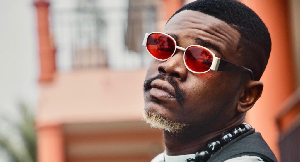Some of the world’s leaders simply refuse to step down, keeping power for decades.
The huge protests that rocked Burkina Faso last week had one key issue at their core. Protesters wanted Blaise Compaoré, their president since 1987, to cancel his plans to extend his term limits. He had already been president for 27 years; why did he need more time? In the end, Compaoré stepped down. But around the world, there are numerous other leaders who have been in power for decades. This chart lists some of the longest-entrenched nonroyal leaders.
It may seem strange for Western readers, who tend to live in countries with strict term limits that make it difficult for any one politician to hold onto power. But around the world, there are many leaders who have clung to power for decades.
Power isn’t always defined by the position held, of course. And as such we’ve included in the chart leaders who have transitioned from one position of power to another; Cameroon’s Paul Biya, for example, started as prime minister and later became president, while Russia’s Vladimir Putin shifted from president to prime minister and back to president. Some leaders may also have had small gaps in their terms in office. (For example, there were two days in 1999 when Sam Hinds didn’t lead Guyana, but we didn’t count them).
The list presents an interesting mix of geographical regions. African leaders, many with autocratic (or semi-autocratic) tendencies, are well represented, especially those from the oil-rich areas of central and southern Africa. Also high on the list is Iran’s supreme leader, Ayatollah Ali Khamenei, who wields ultimate political and religious authority and ranks above the democratically elected presidents, who are indeed constrained by term limits.
Putin, himself nominally subject to term limits (though he got around them), is one of a number of post-Soviet leaders. However, his 15 years in power isn’t much compared to Kazakhstan’s Nursultan Nazarbayev or Uzbekistan’s Islam Karimov, both of whom have led their countries since Soviet times. Cambodia’s Hun Sen, who emerged as a political leader after his time as a fighter with the Khmer Rouge and subsequent defection to neighboring Vietnam, has held high office since 1985, at one point briefly sharing power with Prince Norodom Ranariddh.
It’s all quite striking, but does it matter that these politicians have all been in power so long? Writing in the Washington Post, Thomas E. Cronin, a professor of American institutions and leadership at Colorado College, looked abroad when arguing for the continued use of term limits in the United States. “The principle of rotation is a check against the notion that any single leader is indispensable,” Cronin argued. “It was the assumption of indispensability that led Hugo Chávez to campaign for the end of term limits in Venezuela and Robert Mugabe to rig his tenure in office in Zimbabwe. It led other national liberation leaders such as Mao Zedong, Fidel Castro, Kim Il Sung and Moammar Gadhafi to become lifers.”
It’s hard to look across these countries and not see examples of personality cults and the accompanying problems of human rights abuses and stagnation. Even in the unusual case of Iceland, a lone social democracy on the list, President Olafur Grimsson (whose position is largely formal yet holds a very important veto power) is often criticized for staying in office so long.
All in all, it’s not a pretty picture, and the list only shows part of it: Charting the longest-serving leaders fails to show the entrenched elites and political dynasties that can often form behind these personalities. North Korea may not appear, for example, but that doesn’t mean the more than 60-year rule of the Kim family is any less worrying. If Burkina Faso is a reminder of anything, however, it is that change will always come, eventually.
Opinions of Wednesday, 5 November 2014
Auteur: Minneapolis Star Tribune














